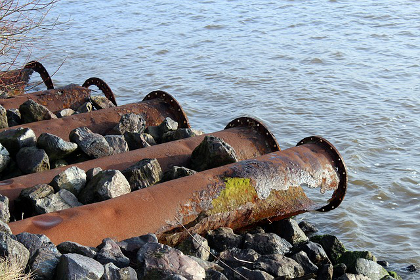
Wastewater Is Key to Reducing Nitrogen Pollution
Upgrading wastewater treatment plants can dramatically reduce a municipality’s nitrogen footprint
June 2, 2016 | Source: Scientific American | by Susan K. Moran
Nitrogen is a vital nutrient for crops, but soils rarely produce enough of it to sustain the relentless farming needed to feed a world population that has more than doubled in the past 50 years. For almost a century synthetic fertilizer has made up the difference, driving up crop yields. Yet we have overindulged, creating vast quantities of waste. Globally, more than 90 percent of the nitrogen used to produce meat and dairy products, along with 80 percent used to grow plant-based foods, is lost to the environment. It contaminates streams, lakes and oceans as well as drinking water, and fuels the growth of algae and other organisms that can suffocate fish and kill plants. And much of the nitrogen that crops and livestock do absorb, and we thus consume, exits our bodies as sewage, a significant source of nitrogen pollution when it is not sufficiently treated.
“Nitrogen pollution is one of the biggest environmental challenges that we face,” says James Galloway, a biogeochemist at the University of Virginia who has been studying the issue for nearly 40 years. “Nitrogen is critical for food security but it is clearly harming human and environmental health.”
Among the consequences is the Gulf of Mexico, a poster child of nitrogen pollution, where agricultural runoff that seeps into the Mississippi River and flows into the Gulf has created “dead zones” where no fish can live. Nitrogen fertilizer also contributes to climate change; nitric oxide, a by-product of fertilizing fields, is a potent and long-lived greenhouse gas. And nitrogen fumes from fertilizer combine in the air with industrial emissions to form tiny, solid particles that can creep into our lungs and cause heart or pulmonary disease. Nitrate, the soluble form of nitrogen, at high concentrations in drinking water can cause infant methemoglobinemia, a disease known as “blue baby syndrome,” which can be fatal.
As a pollutant, nitrogen has not been on the radar like carbon (dioxide) has for individuals, organizations, cities or nations. But that is beginning to change, thanks in part to emerging regulations and scientific tools that are increasing awareness of the problem and helping people solve it. Agriculture, including both the production and consumption of food, is the big player. In the U.S. it accounts for 65 percent of nitrogen pollution, followed by emissions from vehicles and power plants (20 percent) and industry (15 percent), according to the U.S. Environmental Protection Agency.
Galloway and other researchers are trying to help solve the problem. For instance, he and his colleague, Allison Leach, have developed an online tool called N-Print, a nitrogen footprint calculator that is designed to help individuals and institutions measure the amount of pollution they emit from their food and energy consumption so they can then apply that knowledge to shrink their nitrogen shoe size. By compiling average, per capita data, nations could eventually calculate their imprints as well. A per capita footprint is defined as the total amount of reactive nitrogen—all nitrogen compounds except inert nitrogen gas (N2) like that in our atmosphere—that is released into the environment from all sources.
Beyond farming changes, municipalities in recent years have increasingly focused on improving how wastewater, or sewage, is treated. Upgrading wastewater treatment facilities as well as household septic systems can be expensive, but such measures can dramatically return bodies of water to health. “Wastewater treatment is clearly part of the solution, especially in limiting outflow of nitrogen to estuaries,” says Jan Willem Erisman, a professor of integrated nitrogen studies and CEO of the Louis Bolk Institute in the Netherlands. He notes that roughly one half of nitrogen that is lost to the environment when humans excrete what they eat can be reduced by proper wastewater treatment.
